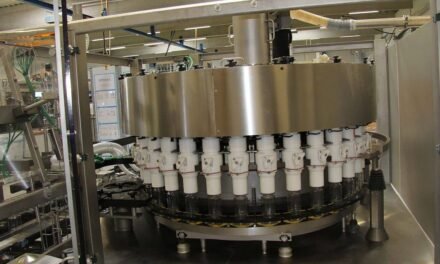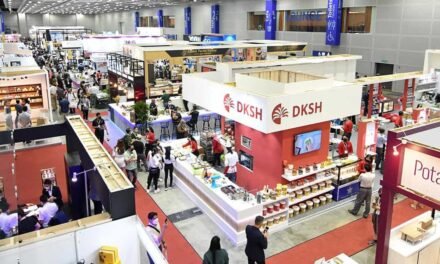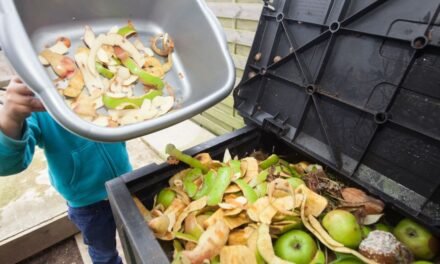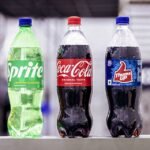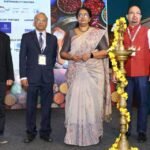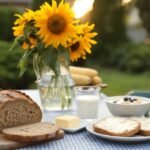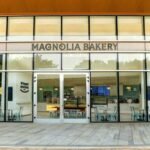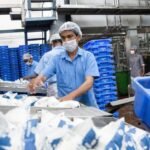Orkla previously used two rather old packaging machines to wrap chocolate products. Their packaging capacity could no longer keep up with the high output of the chocolate moulding line. Following successful test phase Orkla has recently decided to invest in Theegarten-Pactec’s solution.
To increase its packaging capacity, the Nordic company Orkla needed new machines for packaging their chocolate products at their factory in Vaajakoski, Finland. At the same time, Theegarten-Pactec was looking for a partner to take part in industrial trials of their new high-performance CHS packaging machine. Following installation in March 2021 and a successful test phase, Orkla was convinced, and the company has recently decided to invest in Theegarten-Pactec’s solution.
Orkla previously used two rather old packaging machines to wrap chocolate pralines at its Vaajakoski site in Finland. These had reached the limits of their performance some time ago as they could no longer keep up with the high output of the chocolate moulding line. The machines were able to wrap one third of the products that came off the production line. Two thirds were placed in temporary storage due to the lack of packaging capacity and only transferred to the packaging process after production was completed. The process urgently needed to be improved.
“We first discussed various packaging solutions with Orkla in Finland in very general terms back in 2015,” says Daniel Schibur, Head of Sales at Theegarten-Pactec, thinking back to the start of the partnership. “We then picked up the conversation again in 2018 and thought about how we could increase packaging capacity quickly and effectively.” The initial discussions held with the customer were about replacing its two lower-performance packaging machines with two proven high-performance MCC packaging machines from Theegarten-Pactec. Each machine was to wrap 1,200 products per minute efficiently and gently and thus get the moulding line’s entire production volume wrapped. Intermediate storage and delayed packing were thus to become history.

Maximum confidence in the packaging solutions from Theegarten-Pactec
Not long afterwards, however, Orkla’s focus turned towards another alternative when Theegarten-Pactec told the company about its latest customised solution for the confectionery industry: the optimised high-performance CHS packaging machine, designed specifically for chocolate products with various types of wrapping. It had already been through intensive tests at Theegarten-Pactec’s German headquarters in a development process lasting several years and had delivered excellent results.
“At this time, Theegarten-Pactec was looking for a partner to put the CHS through industrial trials,” recalls Arto Liimatainen, Technical Manager at Orkla. "We were excited about the prospect of getting an even more powerful packaging machine and agreed in late 2019 to set up one MCC and one CHS machine in our premises instead of two MCC machines.” This was a lucky coincidence, and also a great leap of faith.”
“This was the perfect opportunity for us to test the CHS under real-life conditions in confectionery production,” Daniel Schibur confirms. “A continuous product flow, continuous operation, different packaging materials and product qualities, cleaning and maintenance work during operation or even difficulties such as process equipment downtimes – there are lots of things that cannot be simulated. Ultimately, tests like these are essential to put the finishing touch to a new development and get it ready for the market”.
Two-lane infeed enables maximum performance
The modular high-performance CHS packaging machine, which was developed specifically to wrap chocolate products gently, was installed and commissioned at Orkla in early 2021. In addition to the general functional tests, the machine’s two-lane infeed – a unique feature of the CHS – was tested in detail. One of the main challenges was the separation of products from the continuous product flow on the main belt into the CHS’s two-lane infeed while ensuring a constant balance between the two lanes. Each of the two infeed lanes has to be supplied continuously with 900 products per minute. In the wrapping process, both lanes are merged into a single-lane flow of 1,800 products per minute.
The CHS solves this problem with an integrated camera system and sensors positioned in just the right places, which constantly check the incoming product flow on the main conveyor. The same applies for the products on their way from the main conveyor to the packaging machine. This enables the control system to determine exactly how many products are on the two-lane infeed at any time, thus ensuring that the difference between both lanes is never more than five products. This allows the CHS to achieve an output of up to 1,800 products per minute for the double twist wrapping style.
A modular machine that adapts to market requirements
Although double twist wrapping is currently the only packaging style being used to wrap chocolate products at Orkla in Finland, the machine can be adjusted flexibly to handle nine different packaging types: double twist, protected twist, top twist, side twist, foil wrap, bottom fold, side fold, Vienna fruit fold and – the latest addition – envelope fold. The machine allows the fold type and format to be changed quickly in just four hours. Most of these changes require only one person. The required packaging types are also easy to retrofit, regardless of how the CHS was originally configured at the time of delivery.
Since customers have to respond quickly to new market requirements, such as resized chocolate products, Theegarten-Pactec has also increased the range of formats that the CHS can cope with. Whereas existing machines could wrap products 16 to 45 mm long, the new system offers a range of lengths between 16 and 60 mm. The Dresden-based company has also made adjustments to the width – previously 12 to 25 mm, now 12 to 35 mm – thus opening up even more application possibilities for the customers.
The people at Orkla are very happy with their new machines: “The packaging machines have given us outstanding results all along the line,” says Orkla’s Technical Manager Arto Liimatainen. “We’ve finally been able to increase our packaging capacities. It was this that prompted us to purchase the whole packaging system, comprising the CHS, the MCC and the feeding system, in October 2021.”
About Orkla
Founded in 1654 as a Norwegian mining company, Orkla is now one of the leading brand manufacturers in the Nordic and the Baltic states. The conglomerate has changed its focus over the decades and now manufactures products for various market sectors, from hygiene and personal care products right through to baking ingredients, food and confectionery. Around 15 percent of Orkla’s total operating income is currently generated by its Confectionery and Snacks business area alone. In addition to crisps, biscuits and crispbread, confectionery and chocolate can also be found in its product portfolio. It includes famous brands like KiMs, Nidar, Göteborgs Kex, Sætre, OLW, Panda, Laima, Selga, Adazu and Kalev.




